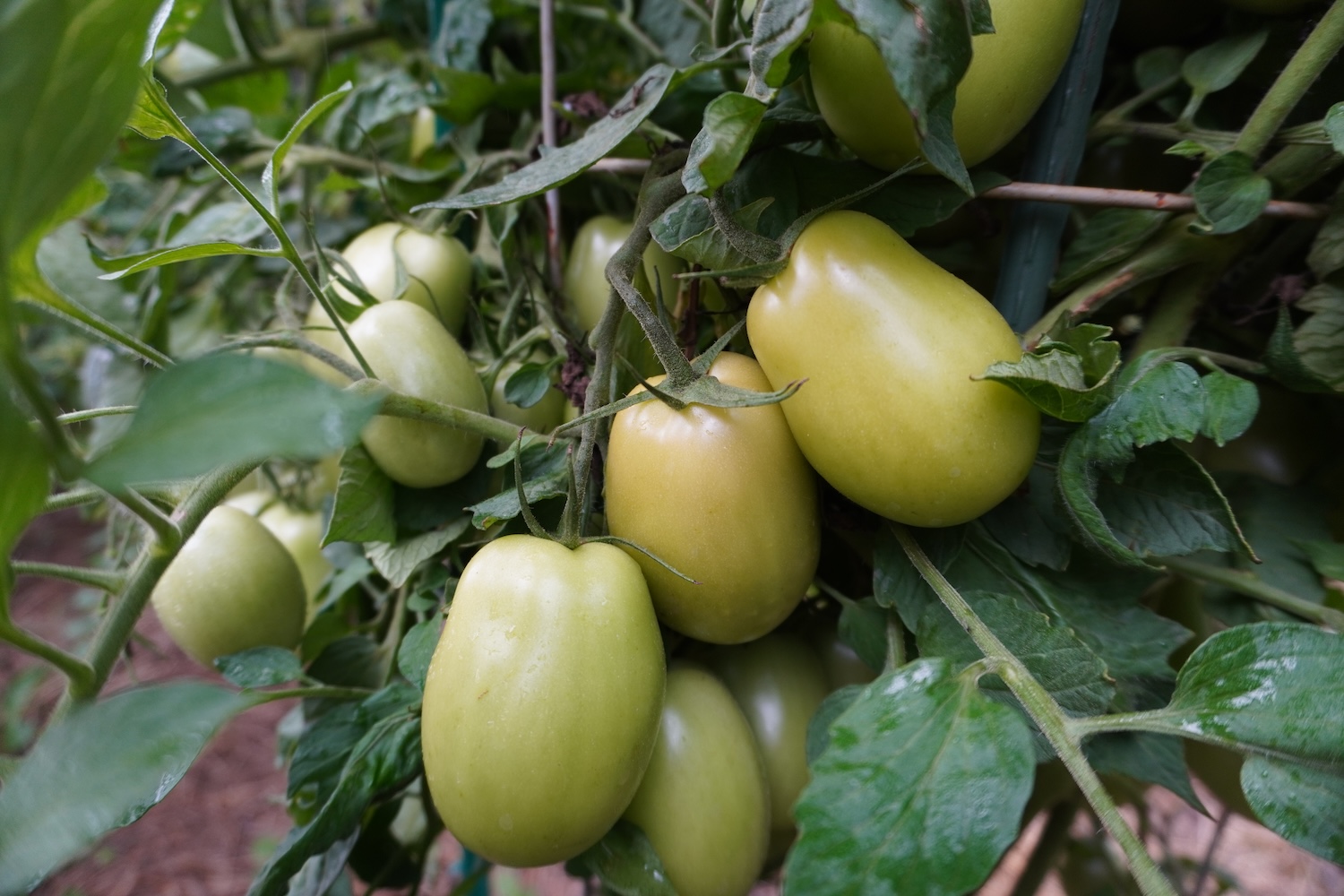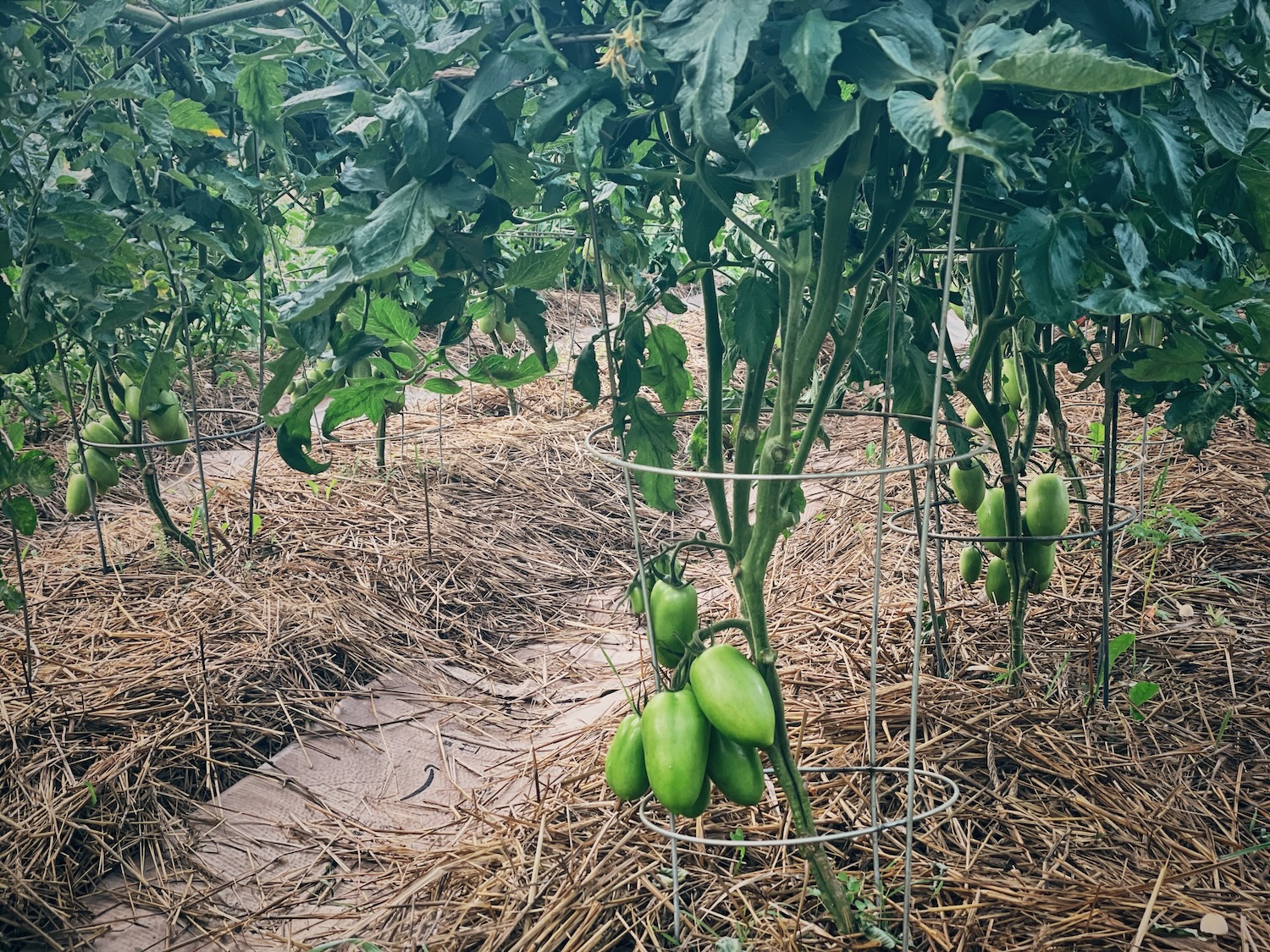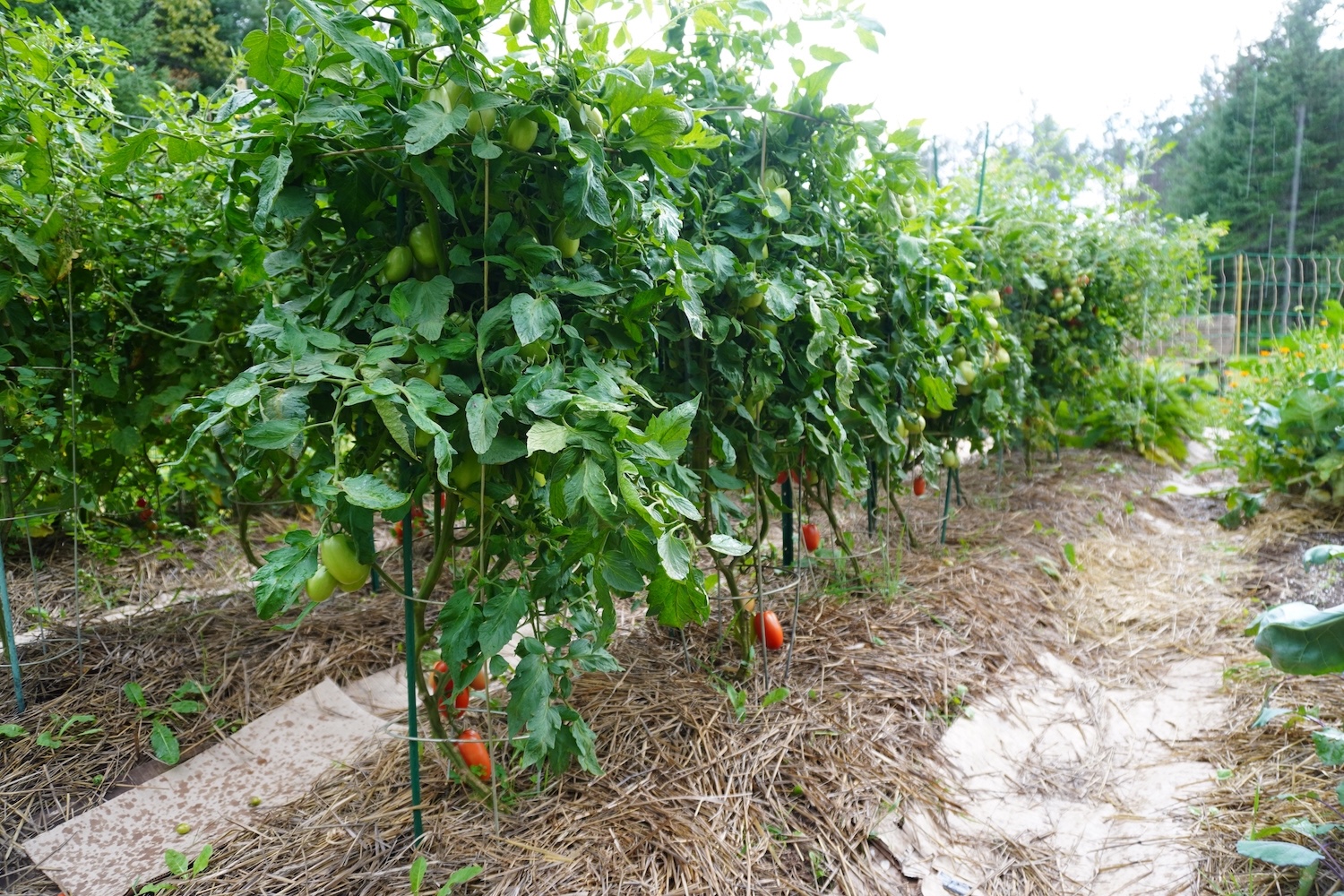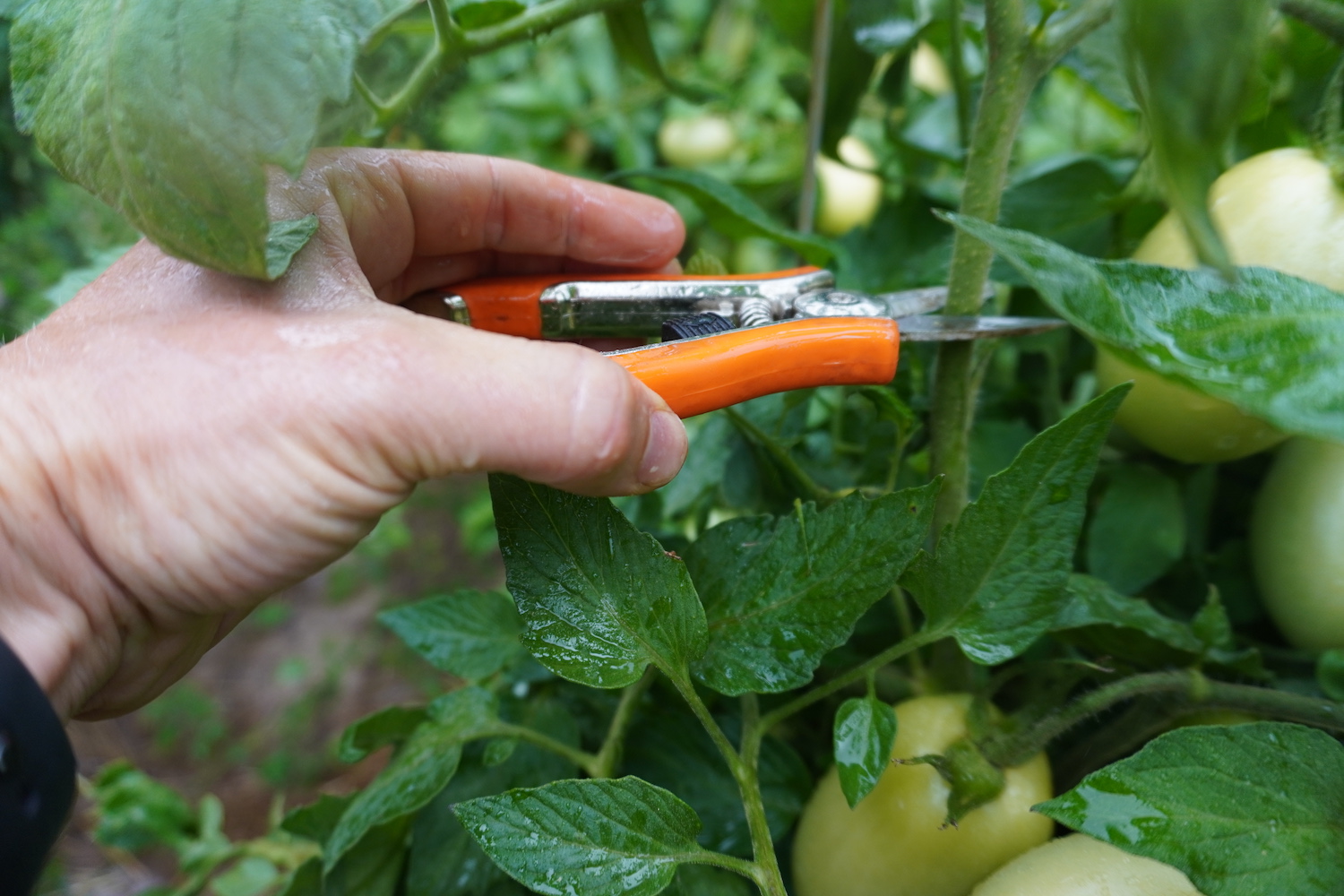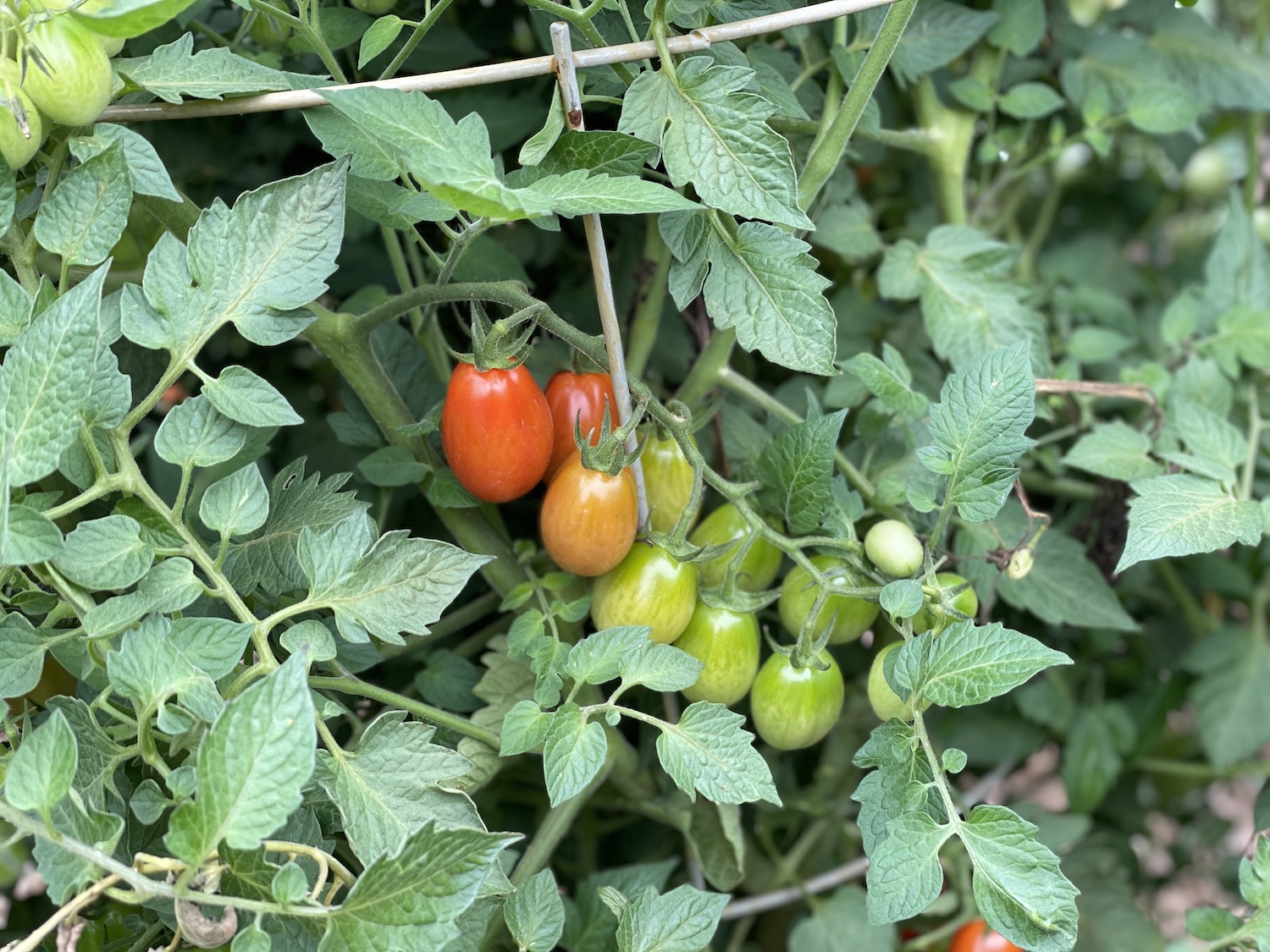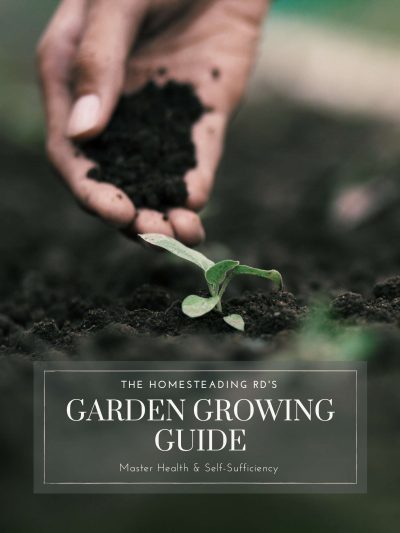Understanding the difference between determinate and indeterminate tomatoes can bring your gardening game up to a whole new level. While they may seem similar from a distance, they are actually quite different!
Determinate and indeterminate tomatoes differ in how they need to be supported for proper growth, their pruning needs, and even how they produce fruit! If you hope to do some canning this season, then you’ll definitely want to tune into this one!
*Disclosure: This post may contain affiliate links to products (including Amazon). I’ll earn a small commission if you make a purchase through my link, at no additional cost to you! Regardless, I only link to products that I personally use on our homestead or believe in.
Determinate vs Indeterminate Tomatoes
Alright, let’s jump straight into it, shall we? What’s the difference between determinate and indeterminate tomatoes anyway?
Determinate tomatoes are more bush-like, rather than a vine, and tend to have 1 central leader. The tomato plant grows to a certain size, sets fruit, ripens that fruit, and then it’s done growing. It’s smaller in size, too! These are typically your canning tomatoes, which we’ll talk about more in a bit!
Indeterminate tomatoes are a true vine and tend to have multiple leaders. They’ll sprawl and grow vigorously, putting out fruit throughout the growing season until the frost finally hits. They can grow quite large, especially if they aren’t pruned to control their growth. These are typically your tomatoes for fresh eating.
Support Differences
If you’ve ever grown tomatoes before, you probably know how unruly they can get if they aren’t properly supported! Plus, drooping on the ground increases the risk of developing blight – no good! Determinate and indeterminate tomatoes have different growth patterns, so they need to be supported differently.
Determinate tomatoes
As discussed earlier, determinate tomatoes are generally smaller and they stop growing once they hit maturity to ripen their fruit. Because of this, determinate tomatoes don’t need as much support as indeterminate tomatoes.
However, they still need some support such as a stake, trellis, or a cage, but it doesn’t need to be quite as robust or as tall as what’s needed for indeterminate tomatoes. Shoot for something that’s 3 feet in height. My favorite supporting strategy is a simple cage, as shown below.
Determinate tomatoes also grow well in containers or grow bags for those needing a space-saving solution! Definitely check out my article Growing Tomatoes in Grow Bags: A Comprehensive Guide to learn more about it!
Indeterminate tomatoes
The support needed for indeterminate tomatoes is on a different level. They can grow as high as 20 feet tall if given the opportunity! Yikes! Now, if you live in a cold climate like me (zone 4a Minnesota), that’ll likely never happen, but if you’re in a warmer climate and don’t stay on top of pruning, it’s certainly possible.
To account for their aggressive growth, plan on utilizing a support structure that’s at least 5 feet tall. I use extra-large tomato cages and also add a T-post to give it stability. It’ll get pretty heavy and topple over otherwise! Indeterminate tomatoes are not a great choice for containers or grow bags.
Pruning Differences
Now that you understand how differently determinate and indeterminate tomatoes grow, it’s probably easy to see how they need to be pruned differently to control their growth!
Determinate tomatoes
Since determinate tomato plants only grow to a certain size and then stop growing in order to ripen the fruit it has set, their pruning needs are less intensive than indeterminate tomato plants.
When your determinate tomato plant is 12-18″ tall and has a few sets of leaves (and flowers), it’s time to prune. Identify the lowest set of flowers and then remove any suckers that are below this point. If you remove anything above this point, you’ll be removing future fruit – oops!
Next, remove any other stems or leaves that are hanging down low. These can increase the risk of disease from the soil splashing upon the leaves when it rains. If blight occurs, you can use neem oil on tomato plants to control its spread.
Continue to trim out any low hanging branches throughout the season as shown in the photo below.
*Want to watch me prune my determinate tomatoes? You can check it out on Instagram!
Lastly, you can consider topping your tomato plant near the end of the season (1 month before your expected last frost date) if you have a short growing season like me. This practice can help scoot the ripening along if you’re racing against the clock on when the first frost hits.
Indeterminate tomatoes
Alright, let’s move on to the vigorous-growing, indeterminate tomatoes! Start pruning when they reach a height of 12-18″ and have a few sets of leaves. Identify the main leaders and count how many there are. Some might be suckers, and that’s okay!
Pick your favorite 1-4 leaders and remove the rest. I like to shoot for 2-3 leaders. Next, sort through the whole plant and remove any suckers to prevent dense growth that can harbor disease. Lastly, remove any stems that are hanging down low. These can increase the risk of disease from soil splashing up on the leaves when it rains.
Some people continue to pinch off suckers throughout the entire growing season. I do it sometimes, but not all the time. We have a short enough season here in Minnesota that there’s not a lot of time for things to get too out of control.
*Want to watch me prune my indeterminate tomatoes? You can check it out on Instagram!
Topping indeterminate tomatoes can be a great strategy to use but for a different reason than for determinate tomatoes. Topping is largely used to control its growth. Remember how they can get 20 feet tall? When my indeterminate tomato has outgrown its cage, I give it a little haircut to keep it from sprawling over.
Harvesting Differences
Determinate tomatoes and indeterminate tomatoes are quite different, aren’t they? So it should be no surprise that you should expect a different harvesting strategy as well. Let’s break it down!
Determinate tomatoes
Determinate tomatoes are a delight when it comes to food preservation and canning. That’s because the plant will set and ripen all of its fruit around the same time (give or take a few weeks). That makes for an efficient canning session when the bulk of it is ready at the same time, rather than only a few trickling in at a time.
On the flip side, don’t expect to be able to have a harvest all summer long with determinate tomatoes. If you’re looking for some tomatoes to eat fresh on a continuous basis, indeterminate may be a better choice.
Indeterminate tomatoes
As we’ve chatted about earlier, indeterminate tomatoes are vigorous in their growth – including fruit! The plant will happily continue to push out new growth and fruit throughout the entire growing season. You’ll be able to enjoy a smaller harvest at a time but on a continuous basis.
If you’re looking for some fresh eating tomatoes to enjoy on your daily sandwich or salad, rather than a big canning session, indeterminate tomatoes are the perfect fit for this.
Should YOU Grow Determinate or Indeterminate Tomatoes?
So, we’ve come down to the big question – is a determinate tomato or an indeterminate tomato the right one for YOU? It really comes down to two big factors: how much space you have and how harvest timing comes into play.
Space
If you are limited on garden space or are growing in containers or grow bags, I would stick with determinate tomatoes. They are smaller plants that are much easier to manage. You’ll thank me later!
Harvest Timing
If you’re someone who wants fresh tomatoes to enjoy all season long and you don’t have huge aspirations to do a lot of canning, then I would go with indeterminate tomatoes! However, if you want to go for big production and want a hassle-free canning experience, I’d stick with determinate tomatoes so that you have a bulk harvest ready to go at the same time.
*What do I personally do? I like to grow both types! I grow determinate tomatoes for the bulk of my production for canning, and then I like to grow a couple of indeterminate tomatoes for fresh eating. It’s the best of both worlds!
Recommended Tomato Varieties
There are SO many tomato varieties out there that it can feel super overwhelming. If you’re looking for some recommendations, check out my favorites below!
Determinate tomatoes
Indeterminate tomatoes
- Amish Paste Tomato
- Pink Boar Tomato
- Cherokee Purple Tomato
- Mountain Vineyard F1 Grape Tomato
- Jasper F1 Cherry Tomato
Other Gardening Articles You’ll Love:
- Growing Tomatoes in Grow Bags: A Comprehensive Guide
- How to Use Neem Oil on Tomato Plants
- Do Deer Eat Tomatoes? 6 Tips to Keep Them Away!
- Topping Tomato Plants (Why, When & How to Do It)

